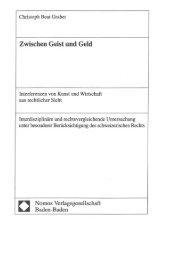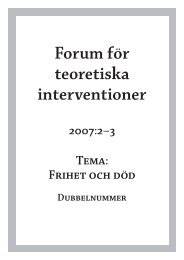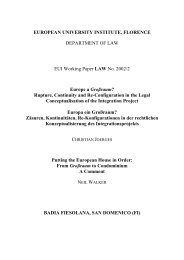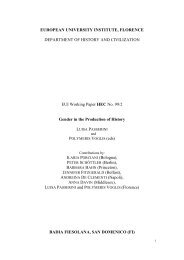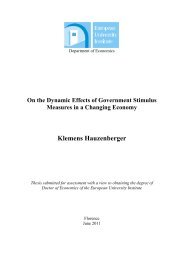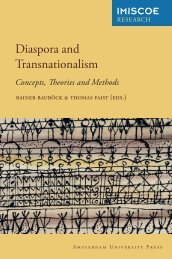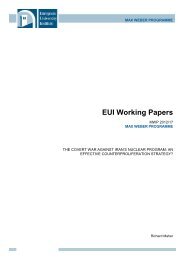Sinziana-Elena Poiana Ioana Lupea Irina-Madalina Doroftei Alina ...
Sinziana-Elena Poiana Ioana Lupea Irina-Madalina Doroftei Alina ...
Sinziana-Elena Poiana Ioana Lupea Irina-Madalina Doroftei Alina ...
Create successful ePaper yourself
Turn your PDF publications into a flip-book with our unique Google optimized e-Paper software.
anked citizens. Although the Hungarian leaders continued to be part of the Communist Party<br />
leadership until 1989 (Mungiu Pippidi, 2000), this did not spare the community from persecutions.<br />
The clustering and cancellation of Hungarian schools, the mandatory assignments after graduation<br />
from university, the change in the ethnic composition of Transylvania through the industrialization<br />
process and the transfer of population, are all policies and tactical measures which supported<br />
Ceausescu’s assimilating project (Andreescu, 2004, Gallagher, 1999).<br />
The start of the Romanian revolution against the Communist regime in Timişoara in 1989 with the<br />
persecutions of the secret police against a Hungarian pastor created a new window of opportunity for<br />
Hungarians to negotiate their status as a community and to define the institutional framework meant to<br />
protect and administer their identity (Robotin, 2000).The first and last violent Romanian – Hungarian<br />
inter-ethnic conflict burst-out in March 1990 in Targu Mures, during the post-revolutionary confusion.<br />
Although the Parliament set up a special investigation committee, so far no coherent and unitary<br />
explanation was found for what had happened..<br />
The disputes between the Romanian and Hungarian political elite concerning the rights of the<br />
minorities were constant during post-Communist politics. The intention of the Romanian political<br />
elite, of whom some former communist partisans and former members of the historical nationalist<br />
parties, was to continue the Communist and inter-war nationalist tradition: the construction of the<br />
nation state by imposing the domination of the majority over the minority (Andreescu, 2004). In spite<br />
of this, the international context - Romania’s aspiration to become a member of the European Union<br />
and NATO, as well as in-country political events, sabotaged the process. One step a a time, the<br />
Hungarians living in Romania gained significant political, cultural and linguistic rights.<br />
Political representation of Hungarians in Romania<br />
Hungarian minority is mainly represented by the Democratic Alliance of Hungarians in Romania<br />
(DAHR). The organization was established in December 1989 for the purpose of “defending and<br />
representing the Hungarian community’s interests”. As a party in the Parliement, often member of the<br />
ruling coalition, DAHR initiated and contributed to the law-making process that resulted in the<br />
improvement of the status of Hungarians and of other minorities in Romania. The Hungarians, as well<br />
as the other minorities, obtained the right to association, to participation in and to political<br />
representation at central and local level, the right to signage in mother tongue in the localities and<br />
counties where their number reached or exceeded 20%, of the overall population, to use their mother<br />
tongue in the local public administration, in Court, and in relation to the state institutions from the<br />
localities where their number reached or exceeded 20% of the overall population, the right to<br />
education in their mother tongue on all education levels, including universities.<br />
DAHR was accused of no longer representing the community’s interests, but the interests of its<br />
leaders. As a resultes, it split into two different political parties: the Hungarian Civic Party and the<br />
Hungarian People Party. They both act at local level, especially in the counties where Hungarians<br />
represent a siginificant share of the total population and they both promote the right to territorial<br />
autonomy for the Szekler Land within the borders of the three former Szekler shires from the Middle<br />
Ages (Figure 2).<br />
DAHR has been running for the Parliament since 1990, and the Hungarian community has been<br />
constantly represented in Parliament since. In 1990, DAHR obtained the largest share of seats, i.e., 40,<br />
representing 7.34%, and in 2008, the fewest, i.e.30, representing 6,39 %. DAHR has also participated<br />
in the local elections, winning seats in the local administration in the counties and localities inhabited<br />
by Hungarians. In 2008, DAHR occupied 4 positions of County Council President in Harghita,<br />
Covasna, Mureş and Satu Mare, from a total of 42 positions (including the municipality of Bucharest),<br />
89 county counselors positions representing 6.41% of the mandates, 184 mayor positions representing<br />
5.78% of the mandates and 2195 local counselors positions representing 5.44% of the mandates.<br />
57



